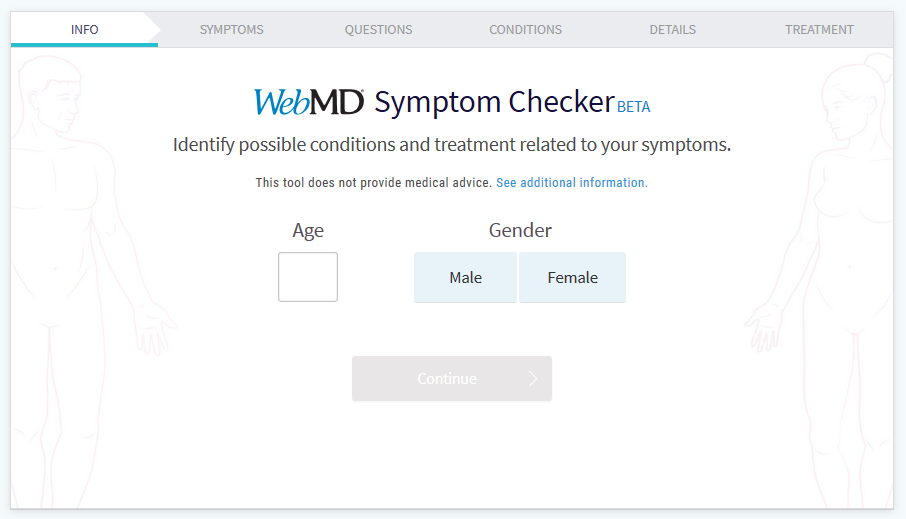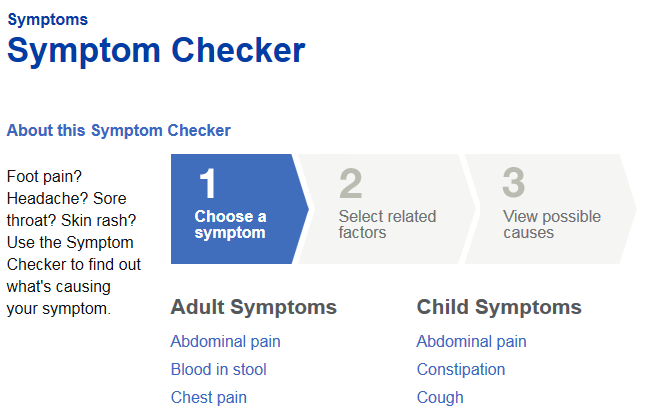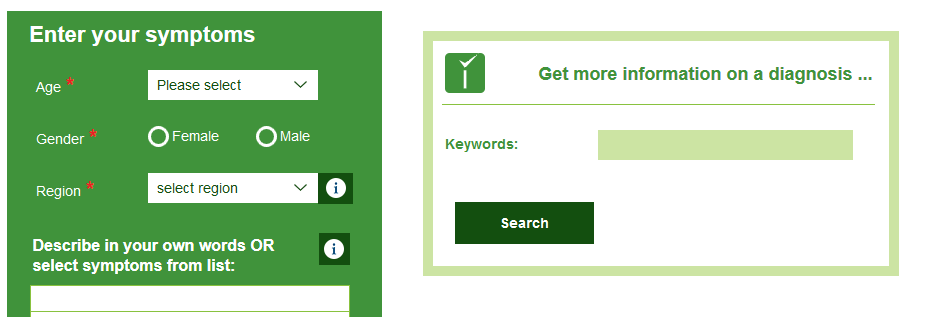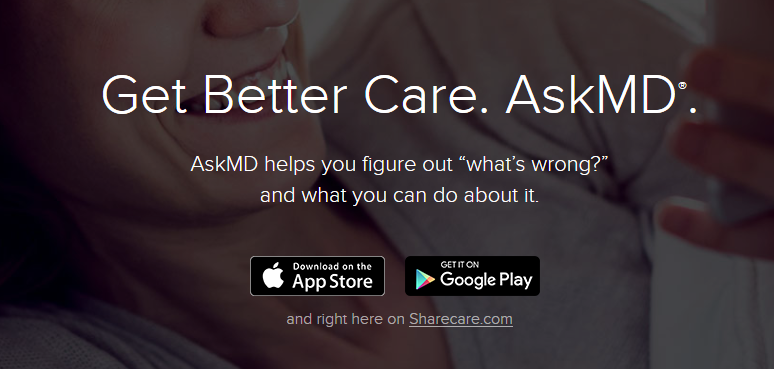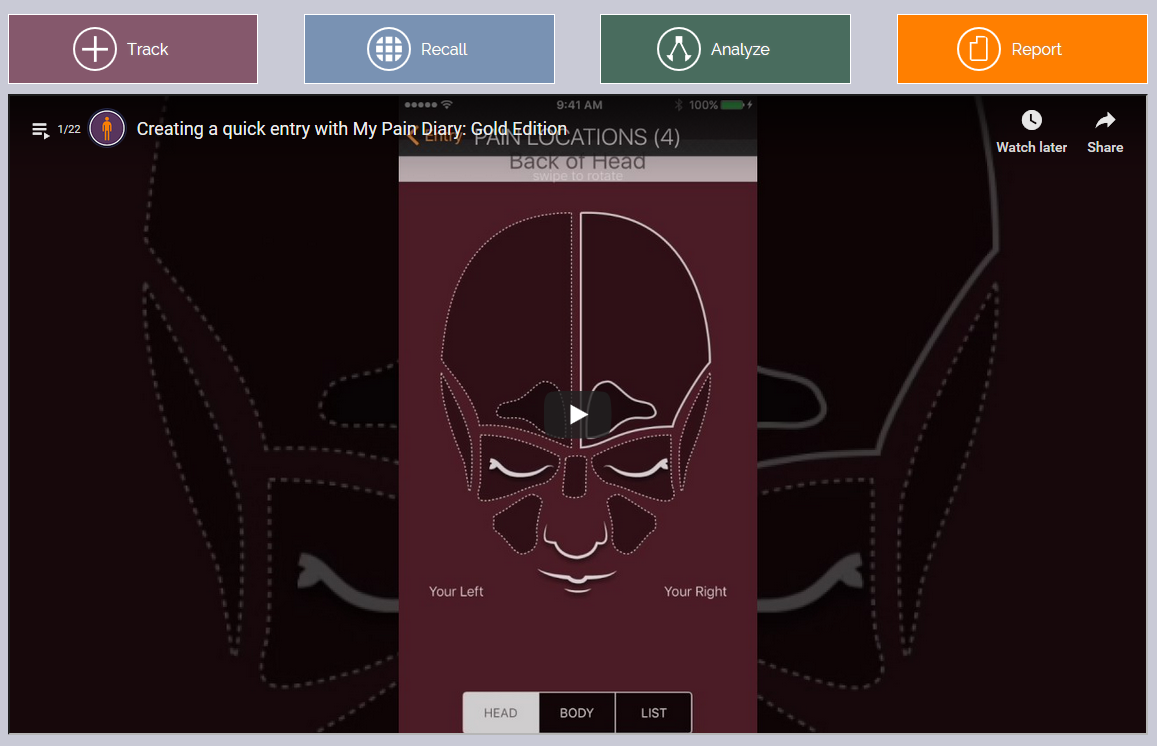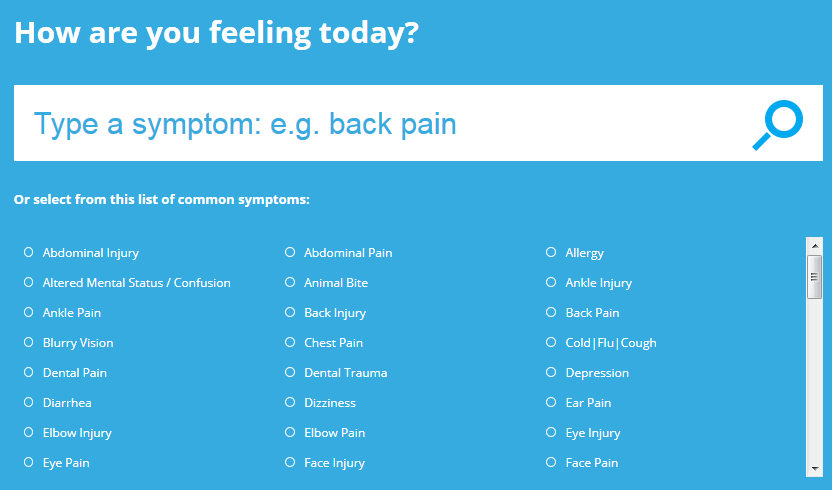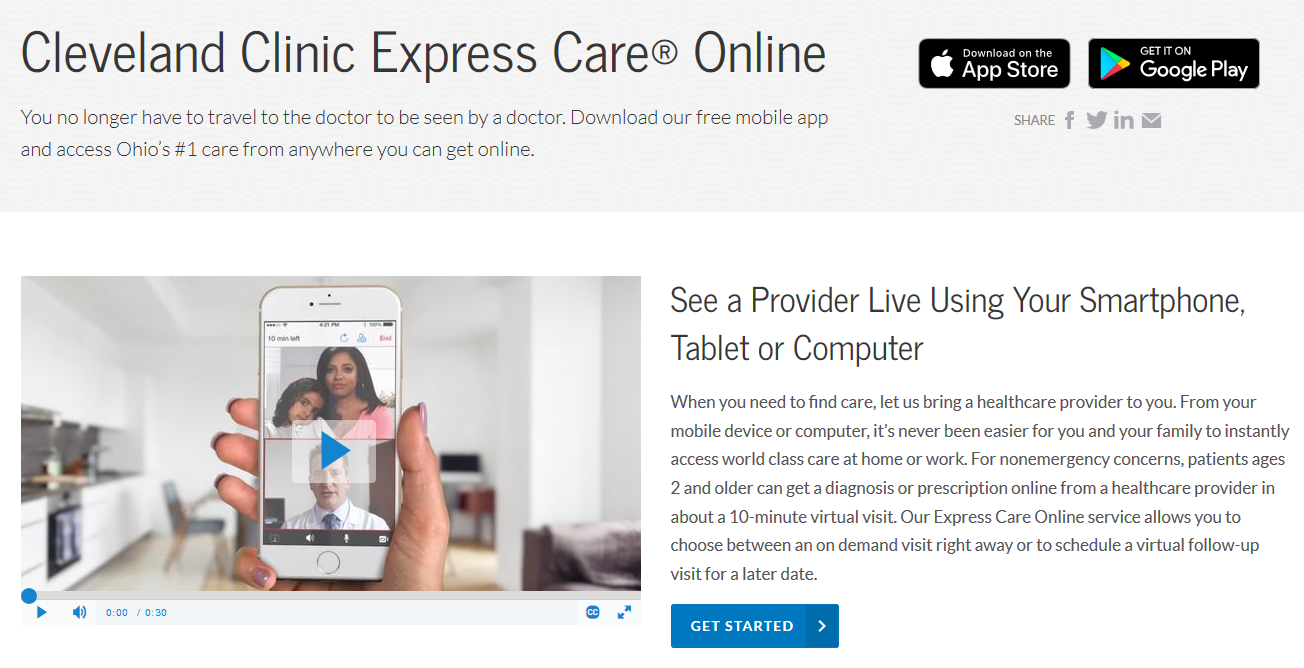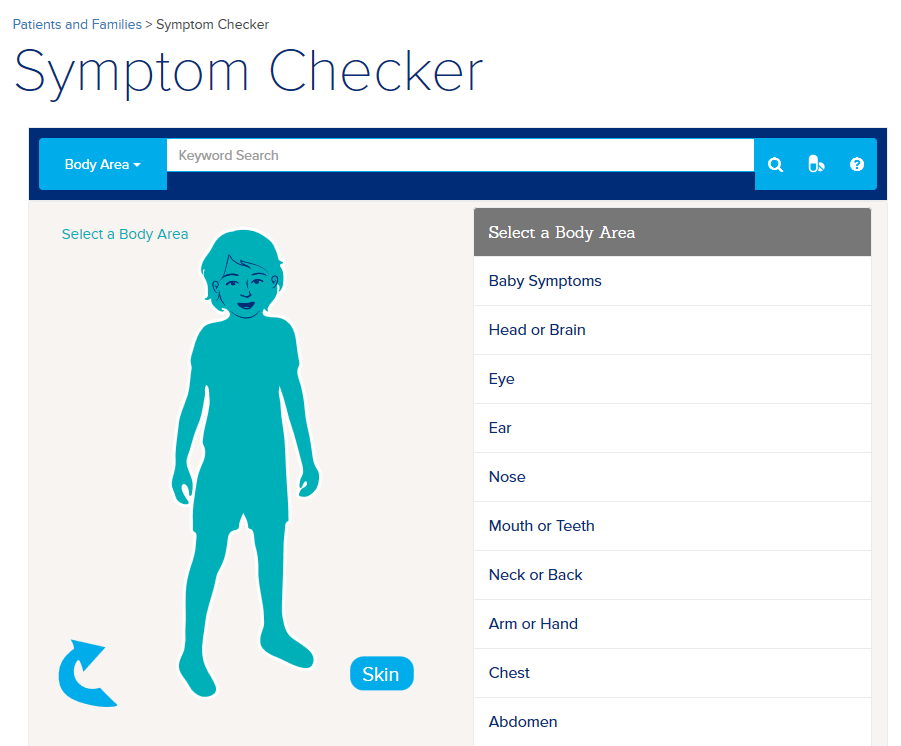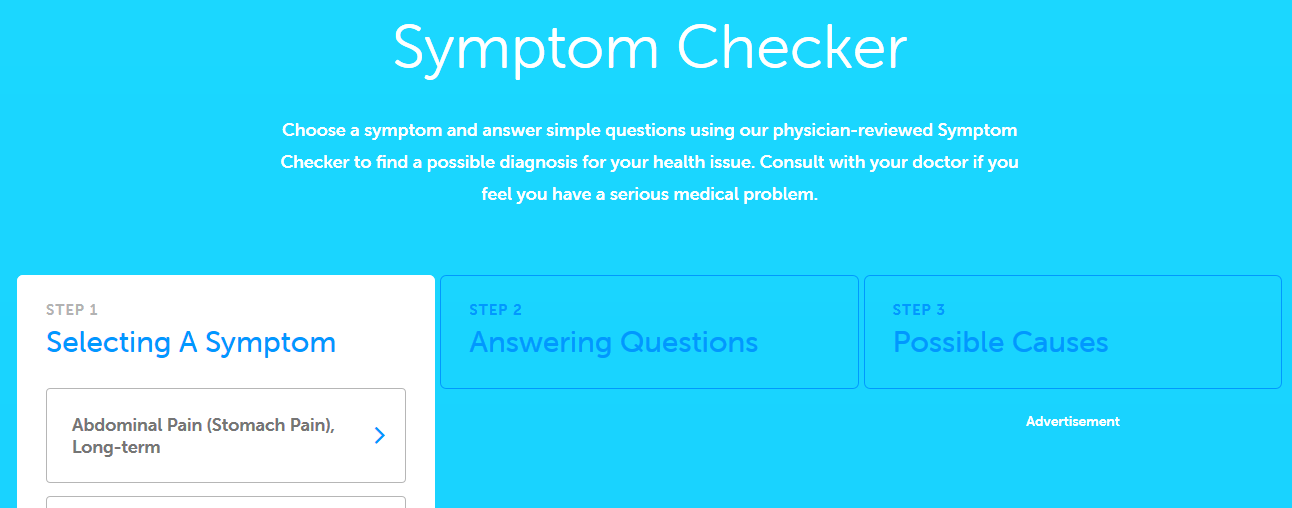Twenty years ago, getting sick meant visiting a doctor. If you happened to need a doctor outside of regular office hours, such as at night or on the weekend, you had to decide whether to go to an urgent care treatment center or the emergency room. If you didn’t have insurance that covered emergency room visits, you might choose to wait until your primary care physician could fit you in.
Today, the situation has changed. If your child gets sick in the middle of the night, you can consult with the internet to see if the issue could be serious or if it’s safe to wait until the next morning to visit the doctor (or even to deal with the issue yourself, at home). Using the breadth of the internet as a de facto symptom checker — looking at different skin conditions to try to find a match, for example — has completely changed the way we handle our health.
The result is that, when it comes to the management of their personal health, people today are much more empowered than they were a few decades ago. Symptoms checkers, although imperfect, have given many patients a way to get instant diagnoses for a wide range of ailments, as well as advice on what to do next.
View our selected Symptom Checkers
The History of Symptom Checkers
The first widely used symptom checker online was WebMD, which released its diagnosis software in 2005. Because WebMD offered internet users a free and private way to perform symptom checking at home, it quickly attracted a high amount of traffic. WebMD was originally founded in 1996, as a way of providing health and drug information in a searchable online database. Once the WebMD symptom checker launched, it didn’t take long to catch on.
Suddenly, people had a new way to approach unknown health problems, which was much needed. Then, as now, health care wasn’t very affordable for the average American. However, for some people, health care wasn’t even accessible. A simple doctor’s visit often cost insured patients a hefty co-pay, even if the physician merely took a cursory glance at the patient’s symptoms and scribbled out a prescription for antibiotics or cold medicine.
Shifting Trends in Emergency Room Visits
These circumstances indirectly caused a major strain on the American health care system. Healthline reports that, in 2010, Americans visited the emergency room about half of the time for all medical procedures, even when a trip to the family doctor would have been the better option for a basic diagnosis of their symptoms.
The majority of these unnecessary emergency room visits were made by uninsured, low-income patients who lacked primary care physicians. When a person is not the patient of a specific doctor, it can be difficult for them to get an appointment, regardless of the kind of illness they’re experiencing. In that event, the easiest (if not the most affordable) solution is to visit the emergency room.
Symptoms checkers — notably, WebMD — changed this trend, according to a study published by JAMA Internal Medicine in 2018. Researchers looked at the treatment habits of a set population between 2008 and 2015, and found that those with relatively minor illnesses (low-acuity patients), were using the emergency room 36 percent less often at the end of the study than at the beginning.
The study cites two factors as the causes for this change. One is the increase in the availability of urgent care. The other is the increase in telemedicine options — i.e. symptom checker apps and software.
Rapid Growth in the Market
Shortly after WebMD’s groundbreaking software debuted in 2005, other providers climbed aboard the symptom checker train, releasing symptom checker programs of their own. These releases predated the heavy use of mobile devices; the early symptom checkers were free computer software programs that could be accessed via an internet connection.
Today, there are countless symptom checkers online from which to choose, meaning that you have nearly infinite options when you’re trying to find out what your symptoms mean and what the potential severity of your illness is. Below, we’ll discuss some of the most notable symptoms checkers, going through the benefits and drawbacks of each one. However, it would first be appropriate to talk more about the accuracy of these revolutionary health tools.
Can We Trust Symptoms Checkers?
The question of whether or not symptom checkers are reliable sources of health information is a valid one. After all, receiving information that isn’t accurate can present major health risks to symptoms checker users. For example, imagine that you’re having symptoms of a heart attack, such as chest tightness or shortness of breath. If a symptom checker tells you that your symptoms are most likely due to a pulled abdominal muscle, this could be a life-threatening misdiagnosis — one that you probably wouldn’t have gotten if you had gone to a doctor.
Generally, however, symptom checkers are found to be accurate with regard to the severity of an illness or other health condition, according to a study carried out the British Medical Journal(BMJ). This groundbreaking study also found that each one of the 23 English-language symptom checkers tested diagnosed the patients’ exact health conditions correctly 34 percent of the time.
This number may not seem very high, but let’s look a little deeper. The study found that diagnoses were in the correct grouping of conditions about 58 percent of the time. In addition, the ability of symptom checkers to provide advice related to triage (a term for care related to the severity of a specific illness or condition) was accurate about 57 percent of the time.
While inaccurate diagnoses are sometimes provided by symptom checking apps and software, it’s reported that these programs tend to diagnose conditions as being worse than they are in reality. That’s because the companies who provide these symptoms checkers want to avoid liability for misdiagnosing major issues as being minor conditions.
As reported by CBS News, symptom checkers are not, and will likely never be, as accurate as actual doctors, who can look at their patients’ conditions from a holistic point of view. However, most doctors view symptom checkers as a helpful force, because they allow their patients to take command of their personal health from the palm of their hands.
The Best Symptoms Checker Options
By now, it should be clear that from the moment free symptoms checkers became available to the public, they had a massive impact on the health care industry. Let’s have a look at some of the most trusted and highest-performing symptom checkers online, including their pros and cons.
A quick note: some of these tools have data available regarding their accuracy, via a Pharmacy Times post about symptom checkers. It should be mentioned that, while this gives us a loose idea of these tools’ accuracy, many of these programs are frequently updated and re-released, so data regarding their accuracy rates may, at this point, be outdated.
Without further ado, here’s a breakdown of some of the most prevalent symptom checkers available today.
WebMD
Why would we start anywhere but with the grandfather of symptoms checkers — WebMD’s innovative tool, now available as a symptom checker online and as a mobile app.
Pharmacy Times scores WebMD’s accuracy at 51 percent, but today’s symptom checker looks much different than how it did in the past. In early 2018, WebMD completely revamped the user interface of this tool, helping millions of people to get a better idea of what their health issues actually are.
This symptoms checker is basic but thorough. It starts by collecting some general information from the user, such as their gender and age. It then gives the user access to a broad database of symptoms, where they can find out more about the specific symptoms they’re suffering from by searching for certain keywords.
Once all of the user’s symptoms have been entered, WebMD generates several diagnosis options that match their symptoms, along with a scoring system that gives an indication of how likely they are to have each condition listed. The user can then click on any of these conditions and read more about it, including its cause(s) and its recommended treatment.
Mayo Clinic Symptom Checker
Widely regarded as one of the best hospitals in the world, the Mayo Clinic also offers a well-respected website, with a free but thorough database of health information. Not long after WebMD cornered the market on telemedicine, the Mayo Clinic released a symptom checker of their own.
While the Mayo Clinic doesn’t offer their tool as a mobile app, the public has access to their free symptom checker through their website. Users are prompted to choose from a list of common symptoms, followed by a list of related factors. The site then generates a list of possible illnesses, as well as treatment recommendations.
Pharmacy Times rates the Mayo Clinic symptom checker at 59 percent accurate, which is near the top of their list as far as accuracy performance. The downside of this tool is that it’s just not as sophisticated as some of the other symptoms checkers, making it most sutiable for diagnosing common health problems.
Isabel
Isabel, a symptom checking and health tracking tool that started out as a charity project, is generally regarded as one of the most complete and accurate symptom checkers in the industry. Isabel is available as a symptom checker online and as a mobile application.
Isabel works much like its competitors. A user inputs some personal information, adds details about their symptoms and other circumstances, and then the program generates possible causes for their symptoms, as well as a rating of their possible condition’s severity. Pharmacy Times rates Isabel as 69 percent accurate, putting it head and shoulders above the majority of its competition.
Isabel also offers users the opportunity to create an account. This feature allows users to track their past symptoms, save their research and learn more about their personal health. Because it provides both accurate diagnoses and a wealth of health information, Isabel advertises itself as “the one the doctors use”.
AskMD
AskMD is regarded as one of the best symptoms checker tools for families. It’s available as a smartphone app with an optional platform for ,smartwatches and allows users to maintain different accounts for multiple members of the same household. AskMD uses an intuitive symptom checker that Pharmacy Times rates at 68 percent accuracy, one of the best scores on the market.
The way AskMD works is simple. When you download the app, you create profiles for every member of your family or household, saving each person’s key medical information. This shortens the time it takes for users to get a diagnosis.
Once it generates your diagnosis, AskMD utilizes location data on your phone to find the best nearby physicians and specialists to treat your issue. It also gives you the option of saving its notes for use in your next appointment. Another feature of this app is its database, which offers information concerning treatment and care for many medical conditions.
My Pain Diary
The Gold Edition of the mobile app My Pain Diary puts a whole new horizon of health tracking tools in the palms of its users’ hands. This program is less of a symptom checker and more of a comprehensive health management and tracking suite, which has a symptom checker built in.
My Pain Diary users can track vital readings, log medications, view summaries of their medical history and generate reports in PDF format to take to appointments for physician use.
The symptoms checker portion of the app is not as reliable or intuitive as some of the other options mentioned, but it performs well as part of a more comprehensive mobile tool for patients.
Symptify
Symptify, available as a mobile app or on a desktop browser as a symptom checker online, is widely known as a reliable, intuitive way to almost instantly receive a medical diagnosis.
Users start by inputting age and gender (mobile users can save their profile in the app), as well as current symptoms. Symptify then generates simple questions about the symptoms reported, which help the program better understand the circumstances of the illness. For example, let’s say you reported having abdominal pain. Symptify builds questions tailored to your condition, such as asking about other abdominal problems, including bulges and rashes.
Once enough details have been gathered, the program comes up with a list of possible conditions, which include percentage matches of the user’s reported symptoms to each condition’s common symptoms.
Symptify then helps users to find emergency rooms, urgent care locations and primary care doctors nearby, giving them the option of notifying any number in their contacts list with their latest medical updates.
Individual Hospital’s Symptom Checkers
Some hospitals now offer convenient, intuitive symptom checking programs that integrate with patient records and data. This is possible (and feasible) because more and more hospitals are transferring their patient records to digital and cloud-based formats.
One such hospital is the Cleveland Clinic, which is rated as one of the top hospitals in the nation in a number of different disciplines. The Cleveland Clinic offers a symptom checker called the Cleveland Clinic Express Care app.
This app allows patients who have already had contact with a hospital in the Cleveland Clinic network to use their symptom checker as well as “meet” with doctors via video chat. This takes the concept of instant health care beyond the invention of the symptom checker. In addition, the Cleveland Clinic Express Care app is regarded as fairly accurate.
Although the Cleveland Clinic is at the forefront of programs like these, such apps seem like the logical next step up from the symptom checker online — a truly immersive telemedicine solution. Expect to see more and more of these tools as hospital communications get more sophisticated.
Johns Hopkins Family Children’s Symptom Checker
While symptoms checkers are becoming more prevalent, John’s Hopkins Hospital in Baltimore, MD offers one of the only ones focused primarily on pediatric diagnoses.
Their symptom checker online is much like others on the market. The interface provides users with a digital model of a patient. Users are prompted to select the parts of the body experiencing symptoms. They then receive diagnosis information and advice on treatment and recovery for a wide variety of illnesses and health conditions.
The difference in Hopkins symptom checker is that it takes into account common diagnoses and risk factors for pediatric patients. Other symptoms checkers take data from the population at large, making them potentially less useful for diagnosing pediatric patients.
Healthline Symptom Checker
Healthline is an medical website best known for its topical healthcare blogs and information, but it offers a symptom checker online as part of a variety of patient resources. Healthline’s tool isn’t a classic symptom checker — the interface resembles the Mayo Clinic’s database, in that it doesn’t generate potential diagnoses for users.
Rather, Healthline users input one of the symptoms they are suffering from and are given access to a wealth of resources on the topic, including general information, advice on when to see a doctor, treatment options, and more.
The upside of Healthline’s symptom checker is that it doesn’t suffer from the inaccuracies of similar tools, because it doesn’t actually offer its users diagnoses. Instead, it gives them a guide to the process of self-diagnosis, and helps them decide whether they need to seek medical attention.
The downside of Healthline’s “symptom checker” tool is that, as helpful as it may be, the Mayo Clinic has already created the gold standard in “database”-style symptom checking tools.
FamilyDoctor.org
The FamilyDoctor.org symptom checker tool is one of the most trusted in the field, due to the site’s backing by the American Academy of Family Physicians (AAFP). Pharmacy Times ranks this tool as one of the top 10 symptom checkers online, offering 56 percent diagnosis accuracy.
Users input one or more symptoms of their current condition, which are met with a list of yes or no questions. Once FamilyDoctor.org has gathered enough information, it will generate a diagnosis and recommendations for treatment.
The reason why FamilyDoctor.org’s symptom checker online is so widely used is that the AAFP’s influence has produced a tool that is easy to use and understand for families at all income and education levels. The final stage of the platform gives users clear, actionable advice concerning on whether or not to seek professional attention, information that isn’t always conveyed by some of the other symptom checkers listed.
NHS Inform
Because most of the symptom checkers we’ve discussed thus far have been built by American companies and health care providers, it makes sense to look at one from overseas. The British National Health Service (NHS) provides single payer government health care to people in the UK. The NHS website offers users a decent breadth of health information, including:
- A database-style symptom and condition encyclopedia
- A symptom checker online, based on the area of the body affected
- A self-help guide for the treatment of various mental and physical conditions
There’s no data available on how accurate the NHS Inform symptom checker online is, but its diagnosis and triage information seems to be on par with American symptom checker options.
The Bottom Line
Let’s review what we’ve learned from this deep dive into the impact that symptom checking tools have made on the American health care system (and abroad).
Symptom checking platforms and applications have empowered people to make their own diagnoses, or at least to find out more about the possible conditions from which they’re suffering. This definitely saves many patients money, in comparison to what they’d spend if they visited the doctor or the emergency room every time they contracted a minor illness. Symptoms checkers may even result in savings for the entire medical industry, as the crucial services provided by emergency rooms and urgent care treatment centers are used less frequently by those suffering from minor conditions.
We’ve also learned that, while symptom checkers aren’t perfect, they’re reliable enough to be trusted in a pinch. The instant access to health information that symptom checkers provide makes them a useful tool — one that has revolutionized the way we manage our personal health.



